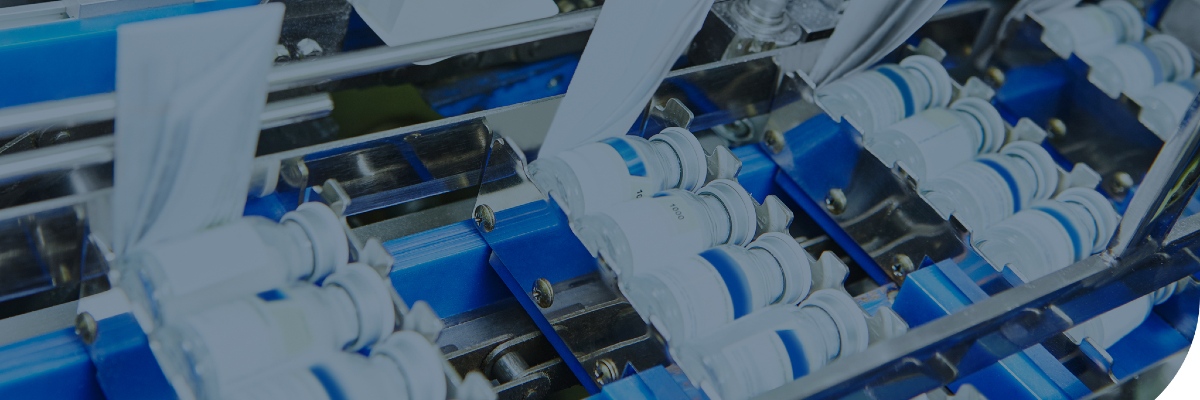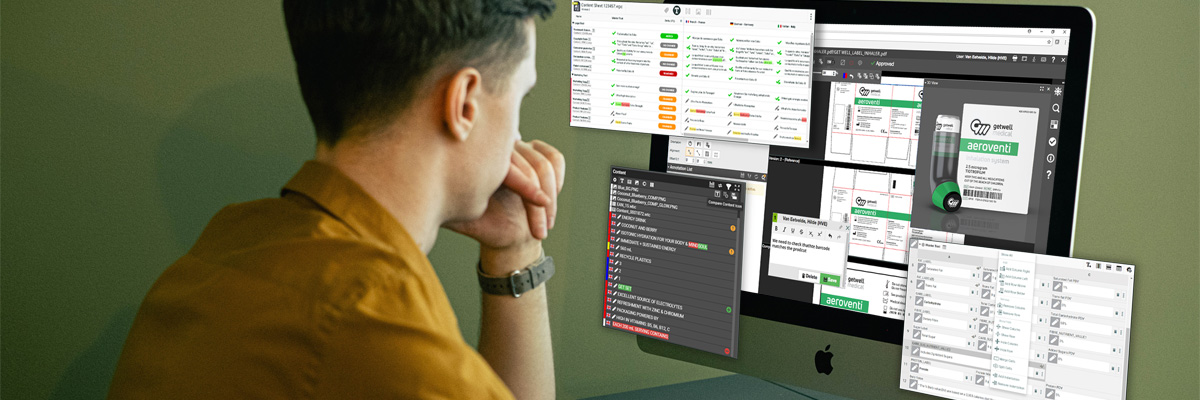For a while now, brands have been implementing or planning around the idea of fully digitizing their packaging process. While there are many companies out there that are ahead of the curve in this respect, many still lag behind.
Due to the COVID-19 pandemic, companies and even entire industries have been forced to scramble to figure out how to keep production up while teams work remotely. But the need for digitizing processes has been around much longer than COVID-19. One might say that this virus is the straw that broke the camel’s back—where some of the straws that preceded it were a need for increased efficiency due to customer demand, a need to cut back on human errors, and a need to keep up with the competition.
While there are numerous processes that brands should be digitizing today, we’re specifically going to talk about packaging. First, we’ll break down why digitizing the packaging process is a must for all brands. Then, we’ll go over the five critical steps for getting there.
The Importance of Digitizing Packaging Processes
Here are some of the key reasons why a digitized packaging process is necessary for a brand’s long term success.
Flexible and Adaptable
In an ever-changing world, brands need to be able to adapt at a moment’s notice. There are consumer preferences that brands must always be aware of because consumers are picky, and rightfully so. As we might know all too well, there are unprecedented external factors that also make adaptability a huge competitive advantage in packaging.
Let’s say a pharmaceutical brand has recently discovered that their core consumers want to purchase their products in bulk as they stock up. However, the pharmaceutical company currently only offers their product in individual sizes. To meet this new demand, the pharmaceutical company has to get a larger size version of the product on the shelf fast. Otherwise, they risk losing their customers to a different brand that already offers their product in bulk. A digital packaging design process will make this transition much smoother than older, outdated methods due to the ability to streamline and automate packaging modifications fast and efficiently.
Consumers are far from the only thing that brands need to keep an eye on, though. Regardless of the industry, most packaging is held under strict guidelines and rules in terms of the information the package conveys, such as age restrictions for toys with small pieces. Some industries face new guidelines and regulations constantly—particularly those that provide health-related products.
For example, the European Union’s new Medical Device Regulations have completely changed the label requirements for companies operating in this sector. Brands that invested in digitizing their packaging process before the announcement of these new regulations will be able to streamline the updates without any major disruptions that would slow down production. Meanwhile, other medical device companies that are still using older methods for their packaging are left scrambling to adhere to the changes.
Reduce Costly Errors and Improve the Quality for Consumers
Packaging errors can be harmful to companies for multiple reasons. Businesses spend copious amounts of resources perfecting their brand image, and even a single typo can cause loyal brand customers to think twice about purchasing a product. If a packaging team can’t even QA their packaging to avoid an easily identifiable typo, could the product inside the package be filled with errors as well?
Errors on packaging can do more than harm brand image. They can also be extremely costly to a brand’s bottom line. Brands that have substantial errors on their packaging may have to recall products that are already in the market, as well as throw away packages that have already been created with the error.
But even more important than the bottom line of a brand is the safety of its consumers. Errors on ingredients labels or dosage typos can have serious, even deadly, consequences.
Digitizing the packaging process will ensure that only approved and safe versions of packaging content are being delivered to consumers. By keeping every detail of package design in a centralized location, brands can control the information, approvals, digital rights, and versions used in customer-facing material so that everything is approved before a package ever hits the shelves.
Online Collaboration
There is a large number of stakeholders involved in each and every packaging creation. Designers, creatives, copywriters, legal, engineers, managers, and more are all key members of the process.
When brands go digital with their packaging process, it gives them the ability to collaborate from anywhere. This is important for brands with global teams, as well as in situations when key team members are working remotely or from home.
Digital packaging process solutions allow brands to keep all members of the team in the loop on what is going on with a project, what the goals are, where the project is at on the timeline, and any other information they need to create content with a purpose.
Steps For Digitizing Your Packaging Process
Define Your Digital Strategy for Packaging, Look for Opportunities, and Build a Business Case
Like any process transformation, the key to success is defining what success actually looks like for your business. If a brand is making the move to digitizing its packaging process, there must be a reason. For example, many brands make the switch to improve their packaging design production efficiency and reduce errors.
After defining the measures of success, brands should then look for opportunities for improvement. Could the packaging team stand to gain from creating efficiencies in the business by automating tasks, including review and approvals? Is there a way to improve product packaging responsiveness? Is it an internal problem focused on employees and current systems?
Discussing these issues and opportunities beforehand will make it easier for a brand to decide whether or not digitizing the process will be successful, and where the main areas of improvement will provide the most value. Then, based on these two steps, brands should create a thorough business case on how digitizing their process will help them meet their goals.
Organize Your Assets, Data, and Teams For Digital Transformation Success
The next step is all about taking inventory. Brands should ask themselves the following questions to make sure that their packaging data is accessible, usable, and understandable:
- What systems do they already use?
- What systems are they missing that could help with digitizing processes?
- What can be outsourced?
- What needs to be connected (exchange metadata and files) to what?
Finding answers to these questions allows brands to identify quick wins (which systems are top priority versus which systems can wait). Answering these questions will also help brands gain an understanding of how to roll out their new processes much more efficiently.
One way to achieve control over metadata and digital assets is by implementing a Digital Asset Management (DAM) solution and content workflow to organize and house the metadata—providing the organization with robust systems of record. DAM stores and organizes final, approved digital content for packaging labels and artwork, including the associated metadata, bridging all product lifecycle-related technologies together.
Once the brand’s assets and metadata are organized, the next step is figuring out which teams will be involved in the roll-out first. Is there a particular product line or business unit that should be exposed to the digitized process first? For global brands, is there a region that should be first? At Esko, we’ve had customers deploy new technology based on which countries were most open to change. Then, they’d gradually move the implementation to new regions. This allowed them to build up momentum with the roll-out and ultimately achieve packaging digital transformation success.
Embrace the Change
According to McKinsey and Company, 70 percent of change programs fail to achieve their goals—mostly due to employee resistance and lack of management support. Significant changes aren’t usually effective by merely telling everyone that this is the way things are going to be done now. In fact, attempting to alter processes through this mentality is a great way to increase pushback.
When deciding to shift into digitization, key stakeholders representing all departments need to be included in the discussions of implementation. As mentioned, there are plenty of people involved in the production of a package, and they should all be heard in terms of how the implementation will affect them. Managers can then take these conversations into consideration when planning how to meet the success factors determined in the first step.
The earlier everyone is involved in the process, the better the final strategy will be. Of course, this is only half the battle when it comes to ensuring everyone involved is on board with the changes. During this stage, managers should also relay the plan for training. With a new process comes a slight shift in roles and responsibilities. A sound training plan and materials will address the skills gaps identified during a brand’s stakeholders’ analysis. Managers should also be able to clearly explain how the plan benefits everyone to ensure everyone feels like they were heard.
Leverage Data Analytics and Business Intelligence
Brands that successfully digitally transform their packaging will see all kinds of benefits, such as increased efficiency and a reduction in errors. However, brands can further capitalize on the digitization by digging deeper into the data and leveraging data analytics to further improve the packaging process.
For example, label and artwork management technology can produce analytical reports and enable data sharing that allows companies to seamlessly identify cost reduction opportunities in packaging (such as artwork approval bottlenecks) and troubleshoot high-impact issues (such as compliance errors) to improve time to market.
Realize the Transformation is Ongoing
It’s important to understand that the implementation of a digital packaging production process is never quite finished. Continuing to monitor KPIs and other indicators related to the transition and identifying bottlenecks and rapidly implementing countermeasures to solve them are vital parts of maintaining the digital process and the use of new tools and solutions.
Improve Your Packaging Process
Esko provides top-of-the-line digital packaging design solutions for brands that want to dramatically improve their packaging.
Discover the benefits that solutions like WebCenter and Studio can have for your brand here. To learn more about how Esko can help bring your packaging design up-to-speed, reach out to Esko today!










